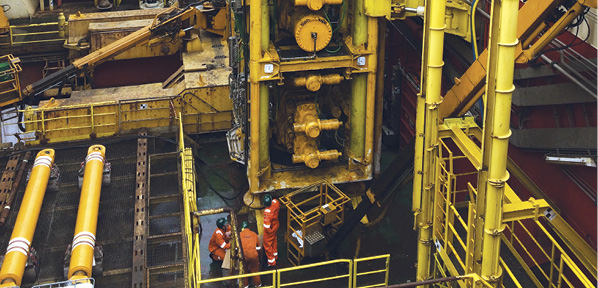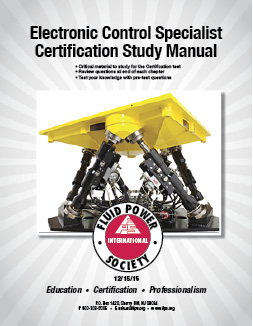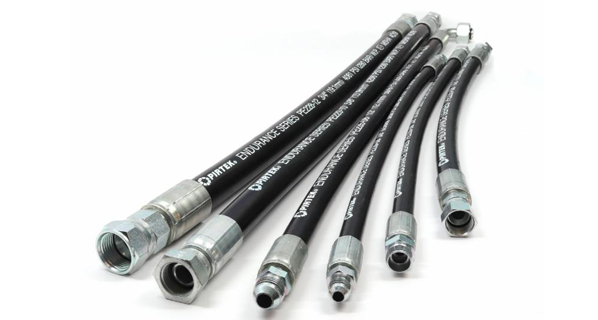How Fluid Power Helps Control Invisible Contaminants

By Sarah Manuel, Product Manager, Norgren; Alexaundria Engleby, Product Sales Engineer, Fluid Control Valves, Norgren; and Phillip McElroy, Product Sales Engineer Manager, Air Preparation, Norgren
Long before the outbreak of Covid-19, the fluid power industry had become vigilant about achieving the highest possible standards of cleanliness, particularly with food preparation and processing.
The 2011 Food Safety Modernization Act shifted focus from responding to foodborne illness to preventing it. The act also imposed more stringent requirements on the food and beverage industry.
Ironically, a large number of recalls occurred after the act was implemented. For example, during 2018, the U.S. Food and Drug Administration recorded 1,935 food- and beverage-related recalls, 84% of which posed a serious health hazard. Most of these incidents were caused by invisible enemies, i.e., bacteria. As a consequence, despite their best efforts, food and beverage companies lost millions of dollars. Clearly, the implementation of the highest possible safety standards required much more than just a piece of legislation.
Improving equipment hygiene
With the added burden of COVID-19, all industries have had to intensify their commitment to sanitation, often in unexpected ways. For example, automakers are manufacturing components for ventilators and motor oil manufacturers are making hand sanitizers. And in the fluid power industry, actuators, coatings, seals, cylinders, and thrusters have been retrofitted and redeployed to protect food supply chains, improve air filters, and operate elevator doors.
The fluid power industry has been working hard to improve equipment hygiene, investing in capital improvements to facilities and equipment in an effort to increase product safety, protect employees, and reduce costs. What’s more, for the industry as a whole, there are several areas that continue to be a focus of innovation, especially in the design of hygienic equipment.
Foodborne illness, for example, can be reduced with stainless steel washdown equipment, which is particularly effective because food safety motors are commonly exposed to moisture, humidity, and specific corrosion-causing chemicals. Moreover, specially engineered stainless steel motors are now manufactured without paint, which can flake into food, hold in moisture, and hide corrosion. Finally, many designs offer totally enclosed nonventilated equipment, which does not use fans or fan covers, both of which are difficult to clean and can breed bacteria.
Components and systems to minimize contamination
To prevent contamination, selecting the optimal material and design components for food processing equipment is crucial. Regardless of the choices, several factors need to be taken into consideration:
- Some surface materials may be better suited than others for food handling.
- Maintaining clean equipment may require the identification of water impurities and food soils involved in the cleaning process.
- Stringent cleaning procedures must be in place to maintain hygienic equipment.
Additionally, design engineers must choose the appropriate technology to fabricate to provide the motion and muscle required to do the work. Pneumatic, hydraulic, and electrical systems all provide unique advantages and disadvantages. Hydraulics is usually used in applications that require high pressure and force (though hydraulics is not ideal for food applications because there is some risk that fluid could leak and contaminate the material). For applications where only low-to-moderate force is needed, pneumatics is preferable. For an accurate level of torque, electrical systems are quicker and more user friendly. Typically, a combination of all three may be required for complex equipment.
When selecting a pneumatic system, for example, special consideration should be given to the construction of components such as actuators, valves, circuits, and compressors. That’s because properly designed components will reduce the presence of small crevices that can foster bacterial growth by trapping food products in hard-to-clean areas.
The critical role of pinch valves
The introduction of unwanted material into food and beverages is an inevitable part of the production process. For example, lubricants, such as O-ring grease, can come into direct contact with a product as it moves through a series of pumps, motors, valves, sensors, actuators, and fittings. The FDA has clear guidelines on contaminants that, at acceptable levels, do not cause harm.
Ensuring that a product is free of harmful bacteria is always a primary concern. For example, E. coli and Salmonella are naturally occurring bacteria present in and around many food and beverage products. Both can be introduced into automation equipment when the food or beverage material is in direct contact with the processing components. However, newer automated system designs that employ prepacked, sterilized, FDA-approved tubing or membrane bags can greatly reduce the possibility of introducing bacterial contamination. Contamination can be further reduced by using a pinch valve that interacts with the tubing and never touches the fluid material being dispensed.
Case in point: Components on automated systems are routinely serviced and replaced at food and beverage plants. With traditional systems, where there is direct contact with the food or beverage, a pause or shutdown of the line is needed to complete periodic cleaning or servicing. By utilizing components such as pinch valves, along with tubing or membrane barrier material, servicing or replacing equipment is a quick and easy task. A pinch valve can be quickly serviced or replaced without a complete shutdown and recleaning of the line, saving valuable time and resources.
Pinch valves can also be designed for full washdown cleaning or sterilization procedures that don’t require them to be removed from equipment. For example, in the biopharma sector, single-use disposable technologies (SUDs) have been adopted as an effective alternative and complement to traditional methods. SUDs utilize disposable, closed membrane bags and tubing, while traditional technologies have directly wetted open systems. As an industry that shares the needs of biopharma, food and beverage may similarly benefit from the use of disposable consumables, such as SUDs, in its applications.
Aggressive cleaning and disinfecting
Changes to cleaning processes can often make up for machines with less than ideal safety designs. But even equipment specifically manufactured to be as effective as possible against contamination can be the actual cause of contamination. What then are the optimal materials and design components for food processing equipment? What cleaning and disinfection options and procedures are best for equipment surfaces?
One key point to stress may seem counterintuitive but is, nevertheless, a fact: aggressive cleaning and disinfection solutions are not always the most effective. More specifically, when changes to cleaning involve more aggressive chemicals or more frequent cleaning, the surfaces being cleaned may break down more quickly, becoming a dangerous source of bacterial growth. In fact, every piece of equipment – from screw heads to bends or joints or the feet of machinery – can hide contaminants.
Consider water: It comprises approximately 95% to 99% of cleaning and sanitation solutions, carrying detergent sanitizers to the surface and moving soils or contamination away from the surface. But water contains impurities that can reduce the effectiveness of a detergent or sanitizer. Moreover, oxygen and carbon dioxide cause corrosion; bicarbonates such as sodium, calcium, and magnesium cause scaling; and chlorides, or sulfates, have been implicated in scale and corrosion.
Next, consider food soil: Everybody understands the need to prevent food soil from touching food contact surfaces. But soil can be either visible or invisible. The primary source of soil is the food product being handled. However, minerals from water or cleaning-compound residue also contribute to films left on surfaces. And, because soils vary widely in composition, no single detergent can dissolve or remove all types (e.g., acidic cleaners dissolve only alkaline soils [minerals], and alkaline cleaners dissolve only acidic soils and food water). In fact, improper use of detergents can actually “set” solids, making them harder to remove. So identifying soil type is critical.
Once the type of soil has been established, it is necessary to consider the effects of different cleaners and their potential uses and hazards. For example, strong alkalis, such as caustic soda, destroy microbes and dissolve protein. But they also cause corrosion. Other less powerful alkalis, like sodium carbonate, remove fats but are slightly corrosive. Phosphoric and hydrofluoric acids, which are excellent for dissolving surface mineral deposits, are corrosive to concrete, metals, and fabric.
In short, aggressive cleaning and disinfection solutions pose great challenges. Their effects are significantly mitigated by using stainless steel for the surfaces of food equipment. It provides resistance to corrosive elements, has no negative impact on individuals who handle it throughout the production cycle, and is highly reusable and recyclable.
The link between sanitation and machine maintenance
One area in which innovation and creative solutions have helped with sanitation has been in machine maintenance. Many food and beverage manufacturers have not been willing to make large investments in new equipment or upgrades. Instead, they find it more economical and equally effective to address cleaning and maintenance of their machines by means of reliable consulting services, particularly with regard to risk, equipment communications, and machine testing. Minimizing operational risk must remain a high priority if damage to installations and breaching of safety regulations caused by parts failure are to be eliminated.
There is a strong link between sanitation and machine maintenance. Fissures in the surfaces of food processing machines will increase the time it takes to properly clean the surfaces or render them uncleanable. It may not directly cause downtime in the traditional sense that the machines must be repaired. However, additional cleaning time means less time for production. Yet, there are solutions – technology platforms that enable users to be proactive about maintenance and system optimization by delivering real-time performance data, thereby enhancing productivity without sacrificing quality or efficiency.
With access to real-time data, the food industry can achieve efficiencies on the plant floor and throughout their operations. An industrial refrigeration company, for example, can stay on top of equipment health with predictive maintenance that can eliminate any risk of downtime. And a manufacturer of baked goods can use predictive maintenance technology to automatically adjust oven temperature to match the characteristics of specific grains from different suppliers to ensure that quality remains consistent.
Responding to threats
The pandemic has reminded us of the threats lurking in places we thought were completely sanitary. But it’s clear that the fluid power industry – or more specifically, those entities mostly engaged in food and beverage processing – have responded, innovated, advised, educated, and informed to keep us safe. New ideas have been implemented. More innovation is in the works. Much has been learned. More has been accomplished. But we are still learning. Vigilance and innovation will continue. And we should never forget: we’re all in this together.







